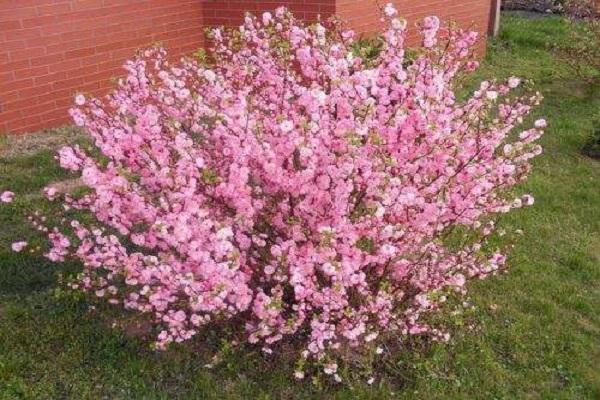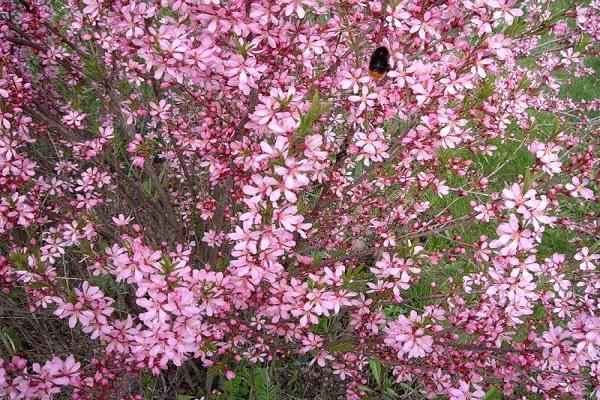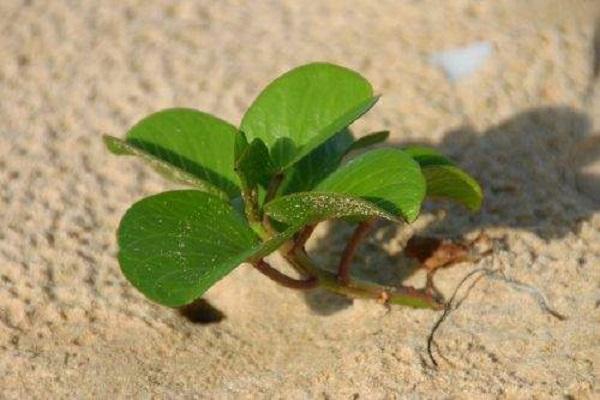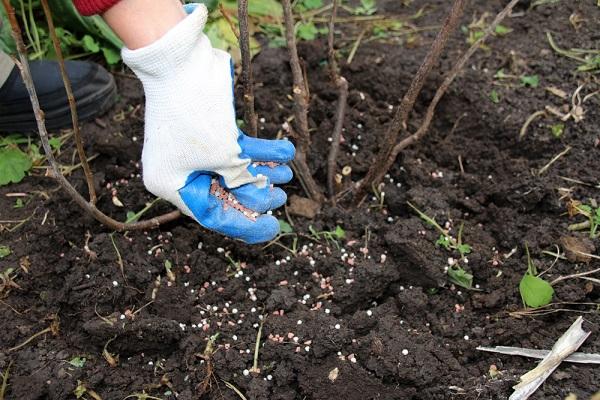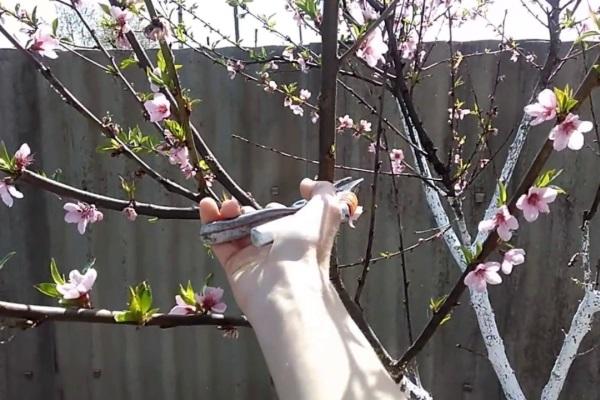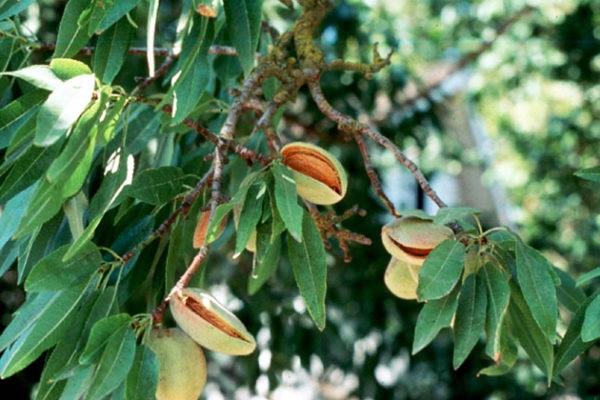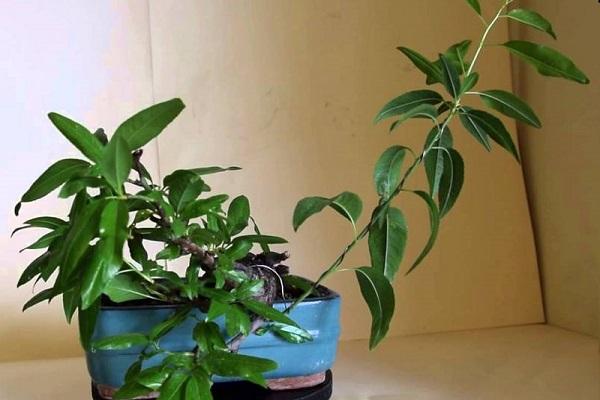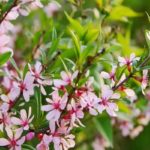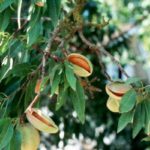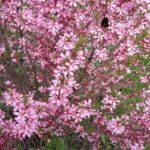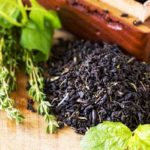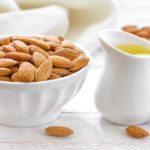Almonds, which bloom in early spring, are a wonderful decoration for the garden. Almond variety Pink foam is one of the beautiful shrubs used by landscape designers and gardeners to decorate the territory. For its double pink flowers that look like small roses, it is sometimes called steppe sakura.
- General information about almonds Pink foam
- Advantages and disadvantages of the variety
- Features of growing a plant
- Time and place
- Selection of planting material
- Planting process
- Care instructions
- Fertilizing the soil
- Watering rules
- Trimming
- Protecting plants from diseases and pests
- Propagation of pink almonds
- Budding
- Seeds
- Layerings
General information about almonds Pink foam
Almond Pink foam (another name is Louiseania) is a low-growing tree or shrub up to 2 meters high. Pink-colored double flowers bloom in early spring. They densely stick to the branches and attract bees, which collect pollen from the fragrant inflorescences. The almond fruit is a drupe surrounded by a velvety pericarp.
Pink foam begins to bear fruit 4-5 years after planting. One tree can produce 6-12 kilograms of useful kernels. Almonds easily tolerate severe frosts (down to -45°C); with good care, they grow in one place for up to 100 years. It has an extensive root system, which helps strengthen soil on slopes.
Note! All almond varieties are self-sterile, so they need to be planted with a pollinator plant.
Advantages and disadvantages of the variety
The Pink Foam shrub has the following positive qualities:
- attracts bees;
- its fruits are a storehouse of vitamins;
- high frost resistance;
- easy to care for;
- has a decorative appearance;
- protects slopes and ravines from spreading.
Disadvantages include intolerance to shading and susceptibility to diseases when grown in areas with wet winters. In addition, when cultivating the variety in the northern regions, the fruits may not have time to ripen.
Features of growing a plant
The further growth of the plant will depend on how correctly the time and place of planting is chosen, as well as the planting material itself. Proper planting and care of almonds Pink foam is the key to the decorative appearance of the planting.
Time and place
Young plants can be planted in open ground twice a year: in the spring, after warm weather sets in, and in the fall, when the leaf fall ends. The seedlings will tolerate autumn planting more easily.The planting site should be brightly illuminated by the sun for almost the entire day: shading by neighboring trees is permissible for no more than 3 hours.
The soil in which almonds are planted should be light, permeable to water and air. In heavy soil, the plant will quickly die. The best option: sandy or loamy soil, fertilized with nutrients. In the area where almonds will be planted, groundwater should not be close to the soil surface.
Selection of planting material
When choosing a seedling, you need to pay more attention not to its height, but to its root system. The less it is damaged, the faster the plant will adapt and grow better. In addition, the root of the purchased plant must have small sucking roots. They serve as the main supplier of water to the ground part of the plantation.
The roots of almonds sold must be damp: wrapped in a wet cloth or placed in a bucket of water or damp sand. You should not purchase a plant with spots on the bark - this is a sign of disease. It is also not recommended to buy a seedling if there is gum leaking on it: it is probably affected by pests or disease.
Advice! You need to purchase seedlings from nurseries or trusted sellers.
Planting process
Almond planting technology step by step:
- A hole 50 centimeters deep is dug.
- Drainage consisting of expanded clay, fine crushed stone, and sand is laid at its bottom.
- Then a layer of substrate is poured, and the roots are carefully spread out on it.
- Fertile soil is added so that the root collar is 10 centimeters below ground level.
- The root circle is watered with water, then mulched with peat or rotted manure.
In order for young plants to grow evenly and not bend from the wind, you need to install small supports made of metal or wood next to them.
Care instructions
To maintain a decorative appearance, Pink Foam almonds must be looked after: fed, watered in a timely manner, and pruned.
Fertilizing the soil
Almonds are fed several times during the season. The first feeding will be mulch from rotted manure. It will not only retain moisture, but will also provide nutrition to the roots when watering. After 2-3 weeks, the bush is watered with fertilizer of the following composition:
- 10 grams of urea;
- 20 grams of ammonium nitrate;
- 10 liters of warm water.
In autumn, almonds are fed with a dry mixture consisting of the following components:
- 20 grams of double superphosphate;
- 20 grams of potassium sulfate.
This mixture is enough to fertilize an area of 1 m².
Watering rules
Almond Pink foam is watered as needed. On sandy soils, for example, this is done more often because the water evaporates quickly. Heavier substrates are moistened less often. Too much or too little moisture is equally harmful to the plant. One almond bush consumes 7-10 liters of water.
Trimming
The first pruning of the current season is done in the spring, before the sap begins to flow. Damaged, broken, dry branches are removed. In addition, if the shoots are competing and thicken each other, then a strong, healthy branch is selected and the other is cut out. When the Pink Foam has faded, begin formative pruning: it will not only not harm, but, on the contrary, will contribute to better flowering in the next season.
Protecting plants from diseases and pests
To prevent almond diseases, it is necessary to properly care for it: remove diseased branches, prevent the crown from thickening, remove foliage and weeds from the root circle, and do not over-moisten the soil. When a plant is affected by diseases, it is sprayed with Bordeaux mixture and antifungal drugs.
When pests invade, various insecticides are used. If the almonds have not been too exposed to the attack of harmful insects, you can use traditional methods of treatment against them: infusion of tobacco, potato tops, a solution of laundry soap. To prevent the appearance of bark beetles, almond trunks are whitened with lime.
Important! When using chemicals, it is necessary to protect your hands with gloves, your respiratory tract with a respirator or gauze bandage, and your eyes with goggles..
Propagation of pink almonds
You can breed Pink Foam almonds in several ways: budding, seeds, layering.
Budding
Pink foam can be grafted onto plum, cherry plum, bird cherry, and other varieties of almonds. The procedure is performed in April or August in cool weather. The vaccination is performed as follows:
- Remove dust and dirt from the rootstock using a rag.
- At a distance of 10 centimeters from the root collar, a T-shaped cut is made on the trunk using a knife.
- The cut bark is set aside.
- A small strip of bark with buds and wood is cut from the Pink Foam.
- The shield is inserted into a previously prepared incision. It should fit completely into the slot.
- The edges of the bark are pressed, which are then wrapped with tape, tape or adhesive tape in 3-4 circles.
It is necessary to pay attention that the kidney should not be closed.When grafting in spring, the tape loosens slightly after 2 weeks and is removed after the foliage appears. During autumn budding, the bandage is left on the plant until spring. All shoots appearing on the rootstock are removed
Additional Information. Almonds are used as rootstock for peaches and apricots, which are more sensitive to weather conditions.
Seeds
To propagate the plant by seeds, purchase them from a flower shop or use kernels from mature almond trees. When planting in spring, seeds require stratification (keeping them at low temperatures) for 3 months. You can use a refrigerator to carry out this procedure. In autumn, the seeds are planted in open ground immediately after harvesting.
Layerings
Reproduction by layering is carried out as follows:
- the lower branches are bent to the ground, secured with wire twisted in the form of an arc;
- the top attachment points are sprinkled with earth and watered;
- after 1 year, the rooted cuttings are dug up and transplanted to a new location.
Throughout the year, it is necessary to constantly water, loosen, and weed the rooting site of the cutting.
Almond Pink foam is used as a magnificent decoration for the local area. It is decorative, easy to care for, and frost-resistant, which is why it is loved by landscape designers and gardeners. Following the recommendations for growing almonds, every summer resident and gardener will be able to grow them on their plot without much difficulty.

